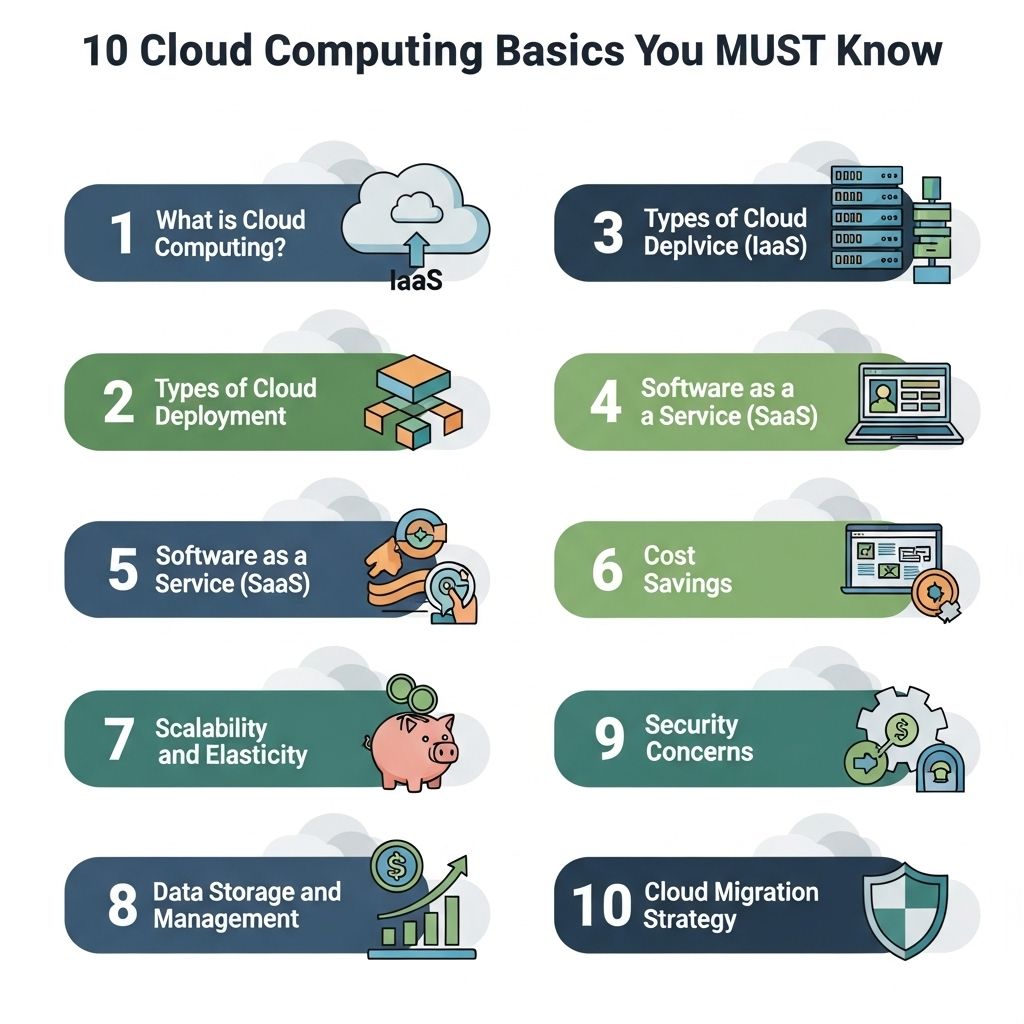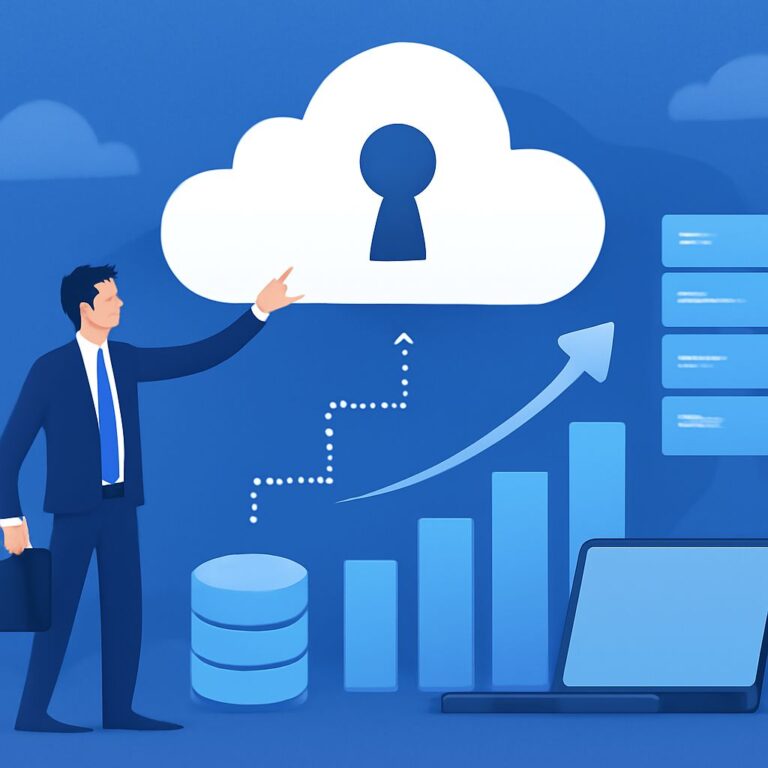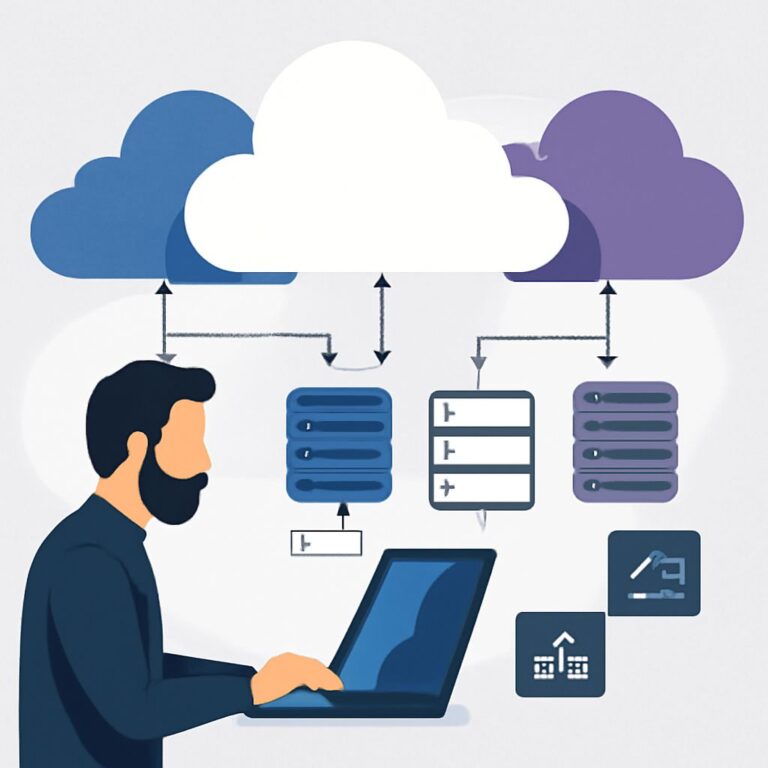Cloud computing has revolutionized the way businesses and individuals operate in the digital landscape. As technology advances, more people are embracing cloud solutions for their flexibility, scalability, and cost-effectiveness. Whether you’re a seasoned IT professional or a curious newcomer to the tech world, understanding the fundamentals of cloud computing is essential. This article covers the basics of cloud computing, breaking down its components, types, benefits, and best practices.
Table of Contents
What is Cloud Computing?
Cloud computing refers to the delivery of various services over the internet, including storage, databases, servers, networking, software, and analytics. Instead of owning and maintaining physical servers, users can access these resources on-demand, only paying for what they use. This model allows for greater flexibility and innovation.
Types of Cloud Computing
1. Public Cloud
A public cloud is a cloud infrastructure that is made available to the general public. Services such as infrastructure and applications are hosted on shared resources, with providers offering services over the internet.
2. Private Cloud
A private cloud is dedicated solely to a single organization. This model offers enhanced security and control over data and applications, ideal for businesses with stringent regulatory requirements.
3. Hybrid Cloud
The hybrid cloud combines both public and private clouds, allowing data and applications to be shared between them. This flexibility enables organizations to scale resources as needed while maintaining control over sensitive data.
4. Multi-Cloud
This approach utilizes multiple cloud services from various providers. Businesses leverage the best features of each cloud service, optimizing performance and cost.
Key Components of Cloud Computing
| Component | Description |
|---|---|
| Infrastructure as a Service (IaaS) | Provides virtualized computing resources over the internet, including virtual machines, storage, and networks. |
| Platform as a Service (PaaS) | Offers a platform allowing developers to build, deploy, and manage applications without worrying about underlying infrastructure. |
| Software as a Service (SaaS) | Delivers software applications over the internet, eliminating the need for installations or updates on local devices. |
Benefits of Cloud Computing
Embracing cloud computing offers numerous advantages to businesses and individuals:
- Cost Efficiency: Reduces the need for physical hardware and maintenance.
- Scalability: Easily scale resources up or down based on demand without significant investments.
- Accessibility: Access data and applications from anywhere with an internet connection.
- Collaboration: Facilitates teamwork by enabling real-time collaboration on shared documents and projects.
- Security: Advanced security protocols and encryption technologies help protect data.
Common Use Cases for Cloud Computing
Cloud computing serves various sectors and industries, including:
- Data Backup and Recovery: Ensures data is backed up securely and can be easily restored when necessary.
- Software Development: Provides environments for testing and deployment, streamlining the development process.
- Big Data Analytics: Processes large datasets efficiently, providing insights that drive decision-making.
- Content Delivery: Enhances user experience through faster content delivery and reduced latency.
Security Considerations in Cloud Computing
While cloud computing offers numerous benefits, security remains a primary concern. Here are key security considerations:
1. Data Encryption
Ensure that data is encrypted both in transit and at rest to protect sensitive information from unauthorized access.
2. Identity and Access Management
Implement robust identity and access management solutions to control who can access cloud resources.
3. Compliance
Ensure that your cloud provider complies with industry regulations and standards to avoid legal issues.
4. Regular Audits
Conduct regular security audits to assess vulnerabilities and ensure compliance with security policies.
Choosing the Right Cloud Provider
When selecting a cloud provider, consider the following factors:
- Service Level Agreements (SLAs): Review SLAs to understand the provider’s commitments regarding uptime and support.
- Performance: Assess the provider’s infrastructure and capabilities to ensure they can meet your performance needs.
- Support Services: Evaluate the level of technical support and resources available.
- Cost Structure: Understand the pricing model to avoid unexpected expenses.
Future Trends in Cloud Computing
The landscape of cloud computing is continually evolving. Here are some trends to watch for:
1. Artificial Intelligence and Machine Learning
Integrating AI and machine learning capabilities into cloud services will enable smarter analytics and improved automation.
2. Serverless Computing
This model allows developers to build applications without managing the underlying infrastructure, simplifying the deployment process.
3. Edge Computing
Processing data closer to the source will reduce latency and improve performance for IoT applications.
4. Sustainability Initiatives
Cloud providers are adopting environmentally friendly practices, focusing on energy efficiency and reducing carbon footprints.
Conclusion
Cloud computing is an integral part of the modern technological landscape, offering countless benefits for businesses and individuals alike. Understanding its core principles, advantages, and security considerations equips users to make informed decisions when leveraging cloud solutions. As the industry continues to innovate, staying updated on the latest trends and best practices will ensure your organization thrives in the cloud-enabled future.
FAQ
What is cloud computing?
Cloud computing is the delivery of computing services over the internet, allowing users to access and store data and applications on remote servers.
What are the main types of cloud computing?
The main types of cloud computing are Infrastructure as a Service (IaaS), Platform as a Service (PaaS), and Software as a Service (SaaS).
What is the difference between public and private clouds?
Public clouds are owned and operated by third-party providers and are available to anyone, while private clouds are dedicated to a single organization and can be hosted on-site or off-site.
What are the benefits of using cloud computing?
Benefits of cloud computing include cost savings, scalability, flexibility, improved collaboration, and automatic software updates.
How does cloud security work?
Cloud security involves a set of policies, technologies, and controls to protect data and applications hosted in the cloud, ensuring confidentiality, integrity, and availability.
What is cloud storage and how does it work?
Cloud storage is a service that allows users to store data on remote servers accessed via the internet, ensuring data is backed up and easily accessible from any device.







